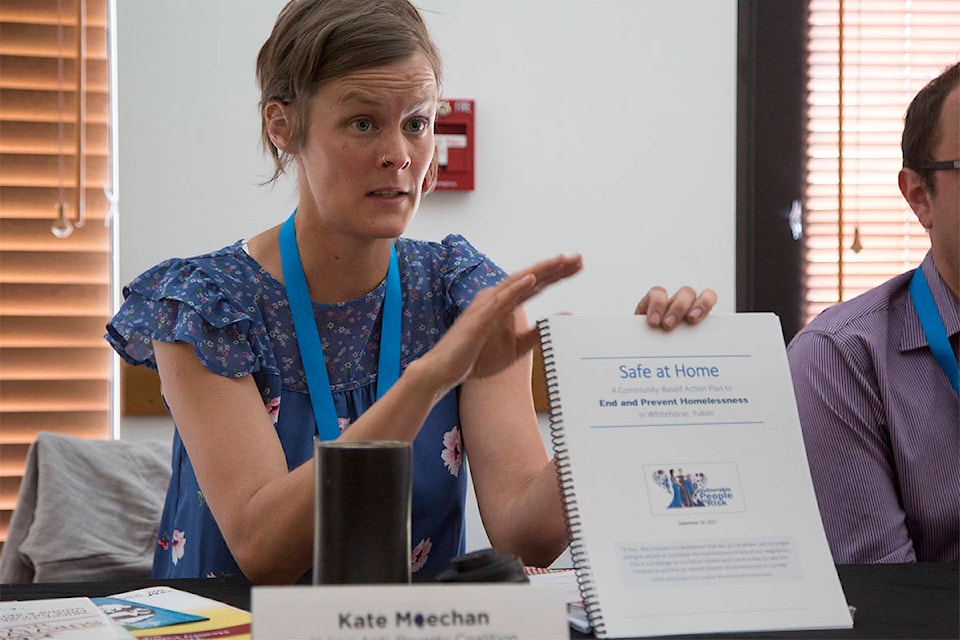Twenty homes have been found for those in need, City of Whitehorse council members and officials were informed at a council and senior management meeting Aug. 8.
At the meeting, Safe At Home implementation manager Kate Mechan provided an update on the work to implement the 2017 plan to end and prevent homelessness in Whitehorse.
As Mechan and Mike Gau, the city’s director of development services who represents the city on Safe At Home initiatives, stressed Safe At Home is an action plan with ongoing work continuing to address homelessness in the city. Mechan said there are other communities in the territory beginning to use the plan as a tool for their own initiatives.
Mechan said part of the effort has been the development of a by-name list in 2018, which allows service providers (which vary depending on the needs of the individual) to get a sense of an individual’s needs and work on a triage basis to find housing and provide support to the most vulnerable.
Of the 54 people on the list, 20 have been housed.
In an interview following the meeting, Mechan explained that people must first consent to be on the list and privacy is protected. For example, while she has access to some data from the list, she does not have access to the names.
Provided contact is maintained with service providers, those in need of housing and supports stay on the list and work is done to match them with landlords who are part of another list of those with accommodations who are working with service providers.
Currently there are about 13 units on the landlord list.
Mechan said there’s no standard amount of time for how long it may take to help secure a home for someone.
She knows of one woman who had housing secured eight months after her name was added to the list. Each situation is unique, she stressed.
Mechan said a big part of the work is ensuring units are the right fit for the client, many who have complex needs and require continued support.
Given the lack of available housing in Whitehorse right now, she acknowledged the work “is a bit of a challenge”.
Along with the by-name list and securing housing for those in need, Mechan said efforts have been underway via the Help Seeker website and app to provide a real-time list of services available for those in need in the territory.
It’s a resource for those looking for immediate support services, which people can access anytime.
Along with the assistance it may provide to those looking for services, Mechan said Safe At Home has access to the analytics detailing what people are looking for.
And that means officials “can be more thoughtful about where we’re directing our resources,” she said.
At the same time, she said there’s a need for Safe At Home to improve its branding as many assume her work falls under the Yukon Anti-Poverty Coalition. While officials with the Yukon Anti-Poverty Coalition have been and are involved with Safe At Home, it’s a separate initiative and Mechan said there’s now a need to draw a line in the sand between the two.
Also on-hand at the meeting were acting Kwanlin Dün First Nation acting chief Jessie Dawson and staff from the First Nation, representatives from the territory’s department of Health and Social Services and the Yukon Anti-Poverty Coalition.
Implementation efforts will continue in the years ahead, Mechan said.
Contact Stephanie Waddell at stephanie.waddell@yukon-news.com
